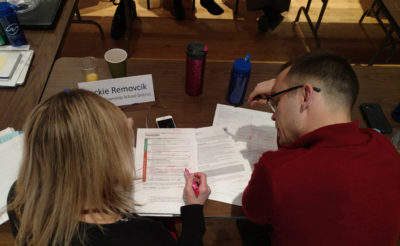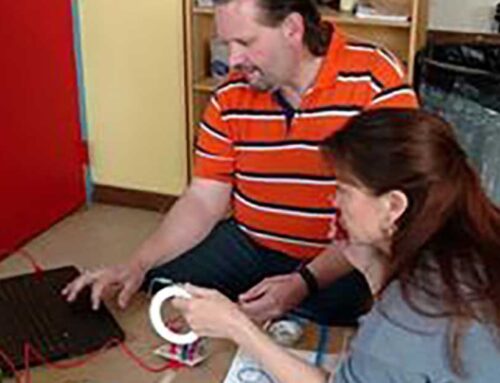 Dr. Removcik Talks Arts Ed PD
Dr. Removcik Talks Arts Ed PD
When it comes to professional learning, administrators have a lot of options. There are seminars on the latest trends, get-togethers with colleagues that often feel too brief, the occasional PowerPoint that seems to last forever.
As the only arts-focused provider of Act 45 credit in Western Pennsylvania, we’ve tried to develop our Community of Learners for Arts Education (CLAE) program to be human-focused and people-powered. Specifically, our CLAE: Building a Blueprint program was designed to help districts ask the right questions and get past template-based interview protocols when hiring new arts teachers.
However, we don’t know if our programs work until we ask our participants.
We decided to follow up with Dr. Jacquelyn Removcik, the Director of Curriculum, Instruction, and Assessment at Hampton Township School District, and see what she thought about her team’s CLAE experience. She was part of the first cohort of CLAE: Building a Blueprint during the 2017–18 school year. Hampton’s team had the chance to use their CLAE action plan shortly after completing the program. Our interview has been lightly edited for style and clarity.
—
Thanks again for agreeing to interview with us! Tell us a little about your background and current career in education.
Dr. Jacquelyn Removcik: I have been working in the field of education for approximately the past twenty years, and I started my career as a high school mathematics teacher. My administrative background has included the positions of assistant principal, curriculum specialist at Westmoreland Intermediate Unit, and Director of Curriculum, Instruction and Assessment in the Hampton Township School District.
How did you first hear about Arts Education Collaborative and the Community of Learners for Arts Education (CLAE) program specifically?
JR: At the time, our district was considering partnering with AEC to perform a self-assessment of our district’s arts programs. As we started to finalize the self-assessment work, I became aware of the CLAE program AEC offers. Given our district was about to engage in a deep analysis of its current arts programming, it made sense that members of our leadership team should further develop their own expertise as related to arts curriculum, programming and instruction.
Although we started CLAE in 2011, AEC first offered this version of CLAE focused on hiring and supporting educators in 2017. Were you aware at the time that you and the Hampton team were part of a new program? If so, what made you want to participate?
JR: When we agreed to participate, we were not aware of the program’s newly revised focus; however, it did align nicely with the district’s current scope of work. Upon completion of our CLAE work, the district was able to use the blueprint created for hiring, as well as apply the ideas as to how we can better support professional development with our arts educators throughout the year.
As you know, this CLAE track centers on creating a context-specific blueprint. How did your blueprint grow as the program progressed? Were there any notable challenges or turning points?
JR: The blueprint we developed became more sophisticated as our work progressed. [It] began to include ideas from other districts who were participating as well as items that were beginning to emerge as a result of our AEC self-assessment work. Often times, we found ourselves reviewing and revising our [self-assessment] action plan to include tenets of our CLAE workshops. The collaborative discussions that occurred often served as an impetus for revisions.
What was it like being part of a cohort that included educators from other districts?
JR: One of the most beneficial components of the CLAE program was the opportunity to collaborate with others in similar roles around arts education. As a district, we were certainly able to draw upon the expertise of other districts in the program. Having the opportunity to have collaborative conversations around research-based practices in arts education was so beneficial, as we were able to brainstorm with each other how we might apply these learnings in the context of our own district.
How was your team able to use your blueprint after the program concluded?
JR: Our district was able to use the plan to reshape components of our hiring process, as we have recently had to hire both art and music educators. In addition, the district has provided and will continue to provide our staff with some of the professional development recommendations that occurred as a result of this work.
Was there a particular highlight of CLAE that really stuck with you?
JR: Throughout the CLAE program, we were able to hear from other educators who have previously been involved with AEC work regarding how they have revised and reshaped their arts programs. Hearing the practical advice of these practitioners was so very helpful in serving as a catalyst of our thinking, but also it provided an opportunity to operationalize what we were learning into current practice.
What would you like others who might be interested in CLAE to know about the program or AEC?
JR: AEC has a tremendous amount of knowledge, expertise and experience regarding arts education. Having the opportunity to dialogue with members of AEC has been incredibly valuable to strengthening my own leadership as related to arts education.





